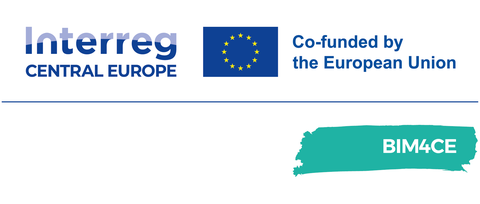BIM4CE - Bridge Monitoring using real-time data and digital twins for Central Europe
Running time: 1 April 2023 - 31 March 2026
Funding amount: €2,701,235.41
Funded by: EU - Interreg Central Europe
Involved partners from Germany, Italy, Slovenia
Summary:
Bridges are critical infrastructure in many ways. However, the maintenance of these assets is often complicated and cost-intensive. Several accidents that happened during the last decades underline the importance of a good management system. Different approaches including routine controls, sensors, digital twins, artificial intelligence, cameras, and other methods are typically used or combined. At different sites in Europe, sophisticated combinations are already in use. However, these systems typically have to be designed and developed individually for the use case at hand, therefore making it complex and cost-intensive. Especially for European countries with less budget for the maintenance of infrastructure, this is often not a viable option. The purpose of this project is therefore to develop a more generalized solution for digital bridge monitoring that is effective enough to help its operators in terms of cost-reduction yet not too complex and cost-intensive. The project aims explicitly at the scalability of the developed solution on a European level. It will likely consist of already-proven data-gathering methods, innovative sensor technology (e.g. low-cost sensor foils for large-scale applications) as well as digital modeling. The Approach of the project is to involve key players from the infrastructure sector right from the beginning. First, the bridge type that such a system is most suitable and needed from the European perspective will be identified. In the next step, the requirements for a digital monitoring system will be defined. As soon as the needs are clear, different approaches in the fields of data gathering, digital modeling, and communication infrastructure will be analyzed and the most promising ones tested in small pilots. After an evaluation of these initial tests, the best mix of technologies will then be combined and tested on bridges from partners or associated partners from our consortium. The result will be a product that enables an economic yet effective monitoring system for bridges based on real-time data and digital twin models.
Contact:
 © Kai Schmidt /IAP
© Kai Schmidt /IAP
Prof. Dr. Karl Leo
Chair of Optoelectronics
Send encrypted email via the SecureMail portal (for TUD external users only).

